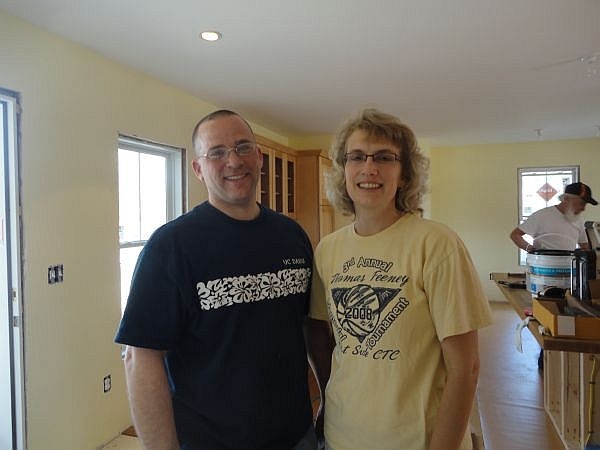
Nearly eight months after Tropical Storm Irene, Vermont’s Long Term Disaster Recovery Group says it’s just beginning to distribute millions of dollars in donations. The money was collected to help people whose property was damaged or destroyed.
The group says it will likely take two years for all the money to find its way to people.
Every Tuesday and Thursday, two members of the allocations committee of the Vermont Long Term Disaster Recovery Group hold a conference call with case workers in the field to go over applications for money from the statewide relief fund.
So far the committee has approved all of the applications it’s received and, in short order, sent checks to families and individuals.
But they’ve only received 30 applications out of the hundreds they’re expecting – and only $350,000 of the $3.4 million in donations in the fund has been distributed.
To understand why, the group says it’s important to keep in mind that phrase ‘long term disaster recovery.’
This is a fund of last resort. Only after money from FEMA, insurance and local disaster relief is tallied up are people eligible to apply to the long term fund.
"When people say how much money have you given out and how many cases, the numbers so far are not huge," says Chris Graff who is on the long term recovery group board. "It takes a while for people to work [through] the system."
Graff says he understands that some people might question why so little money has been distributed so far, but it’s been a matter of waiting for people to finish exhausting other sources of money.
For Dietre Feeney, her husband Paul and their three children that’s a long wait. The foundation was swept out from under the couple’s Bethel home by Irene. A lot of people considered it a complete loss, but Paul, who is a state trooper, insisted on rebuilding it. Initially the couple was turned down by FEMA.
"But we kept our paperwork in order and we just kept appealing and appealing and we just found out the other day that we’d gotten our FEMA money," says Deitre Feeney.
Feeney says she’s now applied for funds from the Vermont Long Term Disaster Group. She says the combination of that money, the FEMA grant and a SBA loan the couple took out still won’t cover the costs of rebuilding their home.
The Feeney’s are not alone and unless the long term fund collects millions more it won’t be able to offer as much help as organizers hope.
While the fund currently stands at $3.4 million, officials hope another $1 million will come in from sales of Vermont Strong license plates. But that will put them less than halfway toward their goal of raising $10 million by the first anniversary of Irene.
For that reason, the group has undertaken a fundraising effort targeting big donors. They’re hoping the fund won’t run dry before more funds come in to help families like the Feeney’s.
Doug Bishop who heads the committee that approves the applications for long term recovery funds says, "We can’t make any guarantees but we’re working our hardest to make sure that we are receiving funds through generous donations that are going to keep pace with the need and that’s our goal."
All of the donations to the long term recovery fund go to help Irene victims. Salaries for two paid staff and for case workers in the field are being covered by funds raised by the Vermont Community Foundation and by a grant from FEMA.